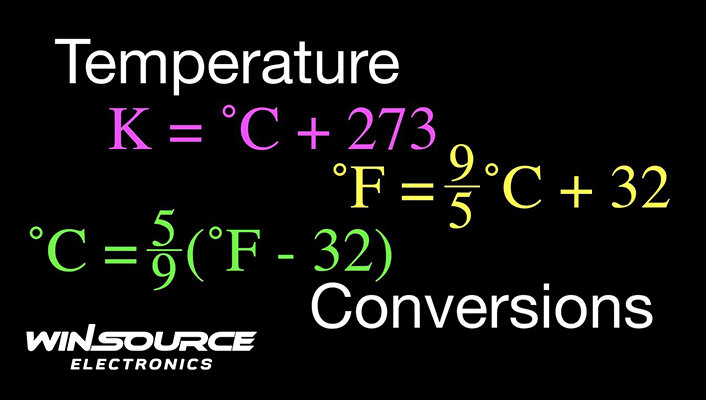
Are you confused about the different temperature scales and their measurements?
You can be at ease now because the following article will focus on the principles of converting temperatures among different scales.
Knowing about temperature conversion is a prerequisite to handling electronic components and circuits. WIN SOURCE is the best marketplace for buying electronic components.
We will provide a simple guide to temperature conversion. Let’s not waste any time and dive into our original discussion. Keep on reading to learn temperature conversion.
Table of Contents
ToggleOverview of the temperature scales
Celsius scale
This measurement system is based on 0 degrees for the freezing point of water and 100 degrees for the boiling point of water. The 0-degree Celsius here is equivalent to 273.15K on the Kelvin scale.
Fahrenheit scale
Fahrenheit unit is measured based on 32 degrees freezing point of water and 212 degrees boiling point of water. Here, the difference between water’s boiling and freezing points is 180 degrees.
Kelvin scale
The Kelvin unit is another International system of units. It is an absolute scale that defines 0 K as absolute zero and it is equivalent to -273.15 degrees Celsius.
Rankine scale
The Rankine scale is also an absolute scale where absolute zero is zero and one Rankine degree equals one Fahrenheit degree.
Temperature conversion
You can use the following formulas to convert between temperature units. Just input the values of one system in the formula and calculate further to find the direct result.
For Celsius scale
°C = (°F – 32) x 5/9
°C = K – 273.15
For Fahrenheit scale
°F = (°C x 9/5) + 32
°F = ((K – 273.15) x 9/5) + 32
For Kelvin scale
K = °C + 273.15
K = ((°F – 32) x 5/9) + 273.15
What are the common temperature scales?
Celsius scale, Fahrenheit scale, Kelvin scale, and Rankine scale are the four common temperature scales. The United States and some Caribbean regions use the Fahrenheit scale. Celsius scale is used in most areas of the world for temperature measurement.
Which one is hotter, 100C or 100F?
To the naked eye, 100C and 100F may seem the same. But in reality, 100C is much hotter than 100F. It is so because 1 degree Celsius is 1.8 times higher than one degree Fahrenheit.
As you have now understood the basic principles of temperature conversion, it will be easier for you to handle electronic components. Here comes the crucial part of finding the best electronic component supplier.
You can depend on WIN SOURCE for that purpose. We are an online shop that distributes a wide range of products including obsolete and regular parts. Go through our product category and order the components you need!

COMMENTS